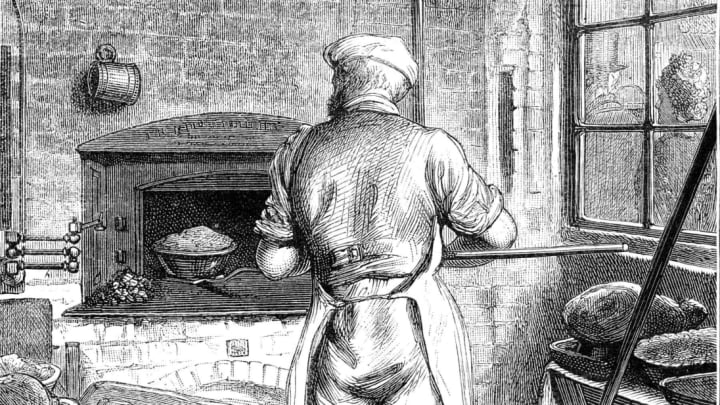After watching loaf after loaf of day-old bread get tossed in the trash, a 19th-century Boston restaurant owner named Joseph Lee came up with a way to give those slightly stale carbohydrates a second life: He’d turn them into bread crumbs.
His bread-crumbing machine, patented on June 4, 1895, comprised an oblong, open metal container with rows of holes along the bottom. When you placed your hardened loaf on top and turned the crank attached to the container, the bread would be pulled through a set of cogs, which would tear it into tiny pieces. Anything too large to fall through the holes would automatically be carried back up to the top for another trip through the cogs.

According to the National Inventors Hall of Fame—where Lee was inducted in 2019—it only took about five years for many major hotels and catering establishments to have one of Lee’s machines in their kitchens, cutting down on food waste and helping breadcrumbs compete with cracker crumbs as the go-to ingredient for fried and battered dishes of all kinds.
The success of Lee’s bread-crumber might’ve been unsurprising to anyone who knew him. Not only was Lee a skilled baker himself, he had also spent most of his life in the hospitality industry. Born to enslaved parents in South Carolina in 1849, he first worked in a Beaufort household, and eventually secured a job as a steward in the U.S. Coast Survey. According to The Black Inventor Online Museum, he ended up in Massachusetts, where he launched a number of business ventures, including two restaurants, a catering company, and ownership of the Woodland Park Hotel.
The crumbing machine wasn’t Lee’s first contribution to the bread industry, nor would it be his last. The previous year, he had patented a machine that evenly kneaded bread dough to produce uniform loaves, an invention he adjusted in 1902 so it more closely mimicked kneading by hand.
The celebrated inventor—and savvy businessman—sold the rights to both machines and continued to profit off his work until his death in 1908.
